2015.07.02 09:27
Why are people so fascinated with classical architecture?
Thomas Gordon Smith's designs, built or not, have a fairly unique distinction of looking like architecture in a Halloween costume. That's not to belittle Smith's work, rather it's an acknowledgment of the diminutive and masquerade nature of the work. While the works' proportions may exhibit a textbook ideal (at least on the surface), what's otherwise missing is any classical size and scale. And it's the overall lack of classical size and scale that manifests present-day 'classical' architecture's belittlement itself.
Regarding masquerade, that refers to present-day's 'classical' architecture's lack of true classical materiality (primarily stone) through and through.
So, Thomas Gordon Smith's portfolio actually does not manifest the Classical Ideal.
2015.07.02 12:40
Why are people so fascinated with classical architecture?
Volunteer, all you're doing is confusing the issue, which, as far as I'm concerned, is architectural design manifestations of the Classical Ideal in the 21st century.
Read your Harbeson to see/learn how size, scale and proportion need to work in tandem.
Generally, I agree with tintt and Miller in calling out historical examples of architecture in terms of their respective periods and styles, instead of naming anything with a classical order, pediment or some moldings as 'classical'. Antique classical architecture pretty much ended with the reign of Maxentius in Rome. And, while Maxentius was ruling in Rome, Constantine was ruling in Treves (today's Trier, Germany), and we see there the beginnings of 'Roman' architecture exhibiting a strong influence from the eastern half of the Empire (you can even say the very roots of Romanesque). The first half of the 4th century comprised a huge paradigm shift in 'Roman' architecture, not least of which was the moving of the Imperial capital to Constantinople. This is where Seroux d'Agincourt's The History of Art through Its Monuments from Its Decline in the Fourth Century to Its Renewal in the Sixteenth starts off--'middle-aged' European architecture is remarkably exuberant.
And for a concise overview of 'size, scale and proportion' see the Grande Durand, where all the plans are at the same scale and all the elevations are at the same scale (but all the elevations are twice the scale of their respective plans).
2015.07.02 12:55
Paul Rudolph's Government Center won't be saved, despite preservationist pleas
Twitter preservationism would only start to come even close to working if the money Twitter made off of the Twitter preservationists was automatically earmarked toward preservation.
2015.07.02 15:30
Paris approves its first skyscraper of the 21st century
Menona, by your argument so far, does your last statement--"you look around and you're in hell"--pertain to what happened to Center City Philadelphia once buildings started being taller than City Hall tower? I personally haven't been downtown in almost a decade, but if it is now hell, I think I would have heard about it. Back in the mid-1980s I was quite connected to the height limit controversy--I was constructing a 3D computer model of Center City for the Philadelphia City Planning Commission to study just that issue. In retrospect, the new tall building developments really didn't have adverse effects on the general 'atmosphere' of downtown. Of course, tell us if that's not the case now.
| |
2015.07.02 16:56
Why are people so fascinated with classical architecture?
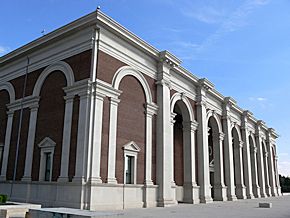
Beeby: in the manner of late 19th century American Beaux-Arts.
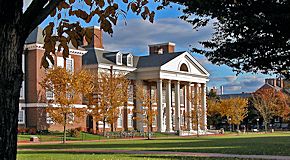
Greenberg: in the manner of early 20th century Collegiate Georgian.
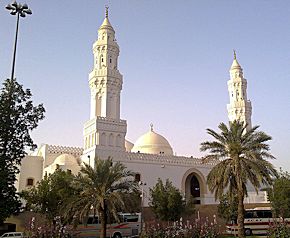
Abdel-Wahed El-Wakil: in the manner of 'I have to look in my Islamic Architecture books'--it looks to me a bit more Egyptian than Saudi Arabian.
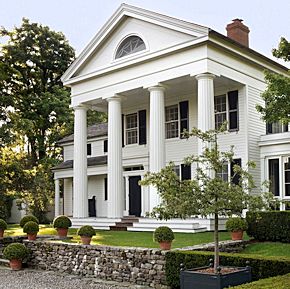
Schafer: in the manner of Greek Revival.
Schafer bottom: in the manner of early 20th century American Suburbia. I don't have to travel very far (into the suburbs around here) to see houses like this in the dozens.
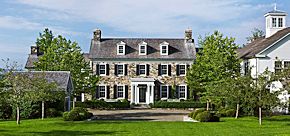
Human nature may not have changed significantly since antiquity, but human artifice (which is what architecture is) has changed significantly since antiquity. EKE, it's kind of foolish to believe that the examples you posted above represent some philosophical classical consistency. If anything, they're just more evidence of just how diverse human nature and human artifice actually is.
| |
2015.07.02 17:50
Why are people so fascinated with classical architecture?
EKE, I suspect you're more interested in a desired sameness than an actual sameness. I'm reminded of your denial of 'classical' architecture throughout history being a continually progressive pursuit, i.e., how each generation that practiced 'classical' architecture always tried to improve it. That is actually how it happened, but you don't want to accept that because it debunks your distinction between Classicism and Modernism.
2015.07.02 18:11
Why are people so fascinated with classical architecture?
Is there someplace where I can read this 'philosophy of classicism'? I'd like to know exactly what it is.
2015.07.02 20:06
Why are people so fascinated with classical architecture?
The Parthenon was already 10 years old when Plato was born, and he was 22 years old when the Erechtheum was complete. It's hard to imagine how Plato's writings and interpretations can be regarded as the "underpinnings, foundation, genesis of Classical Architecture."
"When it come to mythical origins and first ideal forms, it is worthwhile to ask if the mythical origins and the first ideal forms are themselves reenactments. For example, the manifestation of Shiva reenacts metabolism. Moreover, might not Plato's ideal forms [like his Socratic dialogues] also be reenactments (albeit highly abstracted)? Perhaps Plato's perfect circle 'ideally' reenacts the pupils of our eyes and Plato's perfect triangle 'ideally' reenacts the nose on our face."
2015.07.03 10:22
Why are people so fascinated with classical architecture?
Did lots of reading last night.
Started with Demetri Porphyrios' "Classicism is Not a Style" (1982)--"Classical architecture constructs a tectonic fiction out of the productive level of building. The artifice of constructing this fictitious world is seen as analogous to the artifice of constructing the human world. In its turn, myth allows for a convergence of the real and the fictive so that the real is redeemed. By rendering construction mythically fictive, classical thought posits reality in a contemplative state, wins over the depredations of petty life and, in a moment of rare disinterestedness, rejoices in the sacramental power it has over contingent life and nature."
Then read DP's "Cities in Stone" (1984)--"The locus classicus for the conviction that there exists a universal and rational certainty about architecture and the city has been, of course, Vitruvius, Filarte or Alberti. But whereas for the classical world this foundation of certainty was God's divinity, for the post-Enlightenment world of modernity human reason was to take the place of God. Descartes' Meditations stand as the great rationalist treatise of modern times and his demand that we should rely only upon the authority of reason itself has been at the very center of modern life. And in his Critique of Pure Reason, Kant describes 'the domain [of pure reason] as an island, enclosed by nature itself within unalterable limits. It is the land of truth--enchanting name!--surrounded by a wide and stormy ocean, the native home of illusion...'"
I'm beginning to think that if I found DP's successive writings, I'd also find the evolution of whole new 'philosophy of classicism', one that parallels a small group of contemporary architect's straight imitation/copying of late 19th century Beaux-Arts stylings.
Then I remembered Joseph Rykwert's "Classic and Neo-Classic" (1977), and, while looking for that on my bookshelf, I also found Porphyrios's "The 'End' of Style" (also 1977 but after Rykwert)--"Thus, the nineteenth century produced no theory of origins--unlike Classical and Enlightenment architectural thought." I think this marks the beginning of DP's own "theory of origins".
Alas, it is within Rykwert's "Classic and Neo-Classic" that the history of "classic" is found: "the word [classic] refers to an ancient tradition. The sixth king of Rome, Servius Tullius, graded all Roman society into six groups called classes according to their income; all were expected to contribute money to the defense of the state, except the lowest, the proletarii, who had no money to contribute and therefore could only give their children, their proles. Ancient writers derived the word classicus from calare, "to call" (classicus was a contracted form of calassicus); the word was even applied to the trumpets with which Romans assemblies were summoned, and this meaning was retained throughout the Middle Ages. By the time of the late Rebuplic, however, the word classicus was no longer used for the members of any class but the first, or the richest. ... By the seventeenth century, classicus, "classic" meant not only excellent and choice, or first-class, but also antique, the antique had by then assumed the role of an unquestioned and unquestionable model of excellence. Not only writers, painters, and architects, but also statesmen and religious reformers based their practice or policy on the emulation of the antique."
Also did some reading in Samir Younes' The True, the Fictive, and the Real" The Historical Dictionary of Architecture of Quartremere de Quincy (1999) which provided a somewhat unique interpretation of how architects are to employ the history of architecture, and this morning found Bruno Foucart's "The modernity of neo-greeks" (1982) which starts with a most provocative statement: "In fact, the liberation of Greece and its opening up to the Western World coincided with the end of the Neo-Classical period."
| |
2015.07.03 10:29
Why are people so fascinated with classical architecture?
...here's another passage from Rykwert's "Classic and Neo-Classic": "But if you were to take a look at current dictionaries, you would find that the German Grosser Brockhaus takes [neo-classicism] to refer to the more sober twentieth-century architecture (August Perret, Adolf Loos, Mies van der Rohe, Peter Behrens, Gunner Asplund)..."
2015.07.03 12:27
Why are people so fascinated with classical architecture?
Seeing the pseudo-intellectualism continually espoused here prompted me to google pseudo-classicism architecture and pseudo-classical architecture which brought pretty much identical results. It's not a very popular term, but a perfect description.
2015.07.03 13:11
Why are people so fascinated with classical architecture?
quondam.com 2015.07.02 17:50
EKE, I suspect you're more interested in a desired sameness than an actual sameness. I'm reminded of your denial of 'classical' architecture throughout history being a continually progressive pursuit, i.e., how each generation that practiced 'classical' architecture always tried to improve it. That is actually how it happened, but you don't want to accept that because it debunks your distinction between Classicism and Modernism.
EKE 2015.07.02 18:36
"EKE, I suspect you're more interested in a desired sameness than an actual sameness. I'm reminded of your denial of 'classical' architecture throughout history being a continually progressive pursuit, i.e., how each generation that practiced 'classical' architecture always tried to improve it. That is actually how it happened, but you don't want to accept that because it debunks your distinction between Classicism and Modernism."
I never said this. Of course the manifestation of classical architecture has evolved over the centuries. Never said it didn't. What I did say is that there are underlying principles of classical architecture which define its nature, and, like human nature, these do not change.
previously:
quondam.com 2015.03.09 15:29
Seems that an actual criticism is being conveniently ignored.
Albeit "forward the discipline" is not a term I used, I'll repeat what I just wrote:
Although the "classical" work is the best of [David Schwarz's] office's output, it is still just average when compared to the vast amount of very good classical architecture to learn from. My main critique of the American classical architecture designed today is it's timid textbook style.
The fact that "classical" architectural design has elaborately evolved over the years from 500BC to the first half of the 20th century is not at all evident in the (American) classical architecture being built and designed today. The ongoing innovation that classical design once was is simply absent now.
If you want today's "classical" architecture to be professionally respected, you need to step up the game. Otherwise, why should what is really just average architectural design be getting high praise?
EKE 2015.03.09 20:23
Quondam-
I agree with you that the general level of quality of traditional architecture, across the board, needs to improve. This is unquestionably true. One way to ensure that goal is to loosen the ideological stranglehold that avant-garde modernism has in the schools. This is starting to happen, and we are seeing young architects trained to design classical buildings coming out of schools like Notre Dame, University of Colorado, Judson.
But there are many architects at the top of their game, doing excellent work in the classical tradition. I do not agree that innovation is absent.
I wonder a bit about your definition of innovation, though... and your placement of it in the hierarchy of architectural values. It seems to me that you may be superimposing a modernist value structure on classical architecture. Innovation, as a standalone virtue, in and of itself, is a modernist notion, not a classical one. For most architects designing in the classical tradition, innovation may be valued, but only in the service of what's really important: beauty, human comfort and accommodation, structural logic, alignment with place and local culture...among other classical values.
quondam.com 2015.03.09 21:53
I am not superimposing a modernist value structure on classical architecture. I am merely looking at the history of Classical architecture itself. In broad terms, each generation (and 'nationality') strove to make improvements on what was done before--sometimes in the form of refinements, and sometimes in unprecedented innovations, like the introduction of the arch and dome into the classical lexicon. The Roman circus, for example, finally reached its point of highest refinement with the Circus of Maxentius (c.309AD) which is very late considering that Rome was founded c.750BC. Come the Renaissance, when classical architecture became both a practical and academic exercise, we see all the architects trying to out do each other in style and design. Michelangelo stands out as he almost exclusively focused on the design of moldings, and the results of his constant experimentation remain unparalleled in their classical innovations, which, in turn fuelled Mannerism and the Baroque. Neo-classical architecture is due largely to the 'rediscovery' of ancient Greek architecture and the publication of their details and measurements.
Classical architectural design today just doesn't seem to have any that aliveness, rather more like rigor mortis set in.
ps, a couple of weeks ago I was looking through all the HABS collection drawings featuring architecture in Philadelphia. EKE, I thought of you and wondered whether you knew about this online resource, as there are so many measured drawings of all kinds of America architecture, full of plans, elevations and details, and how all this information could really aid in making American classical architecture more innovative if not even more American, again.
pss. check out Gunston Hall, Virginia. I did the 'Chinese' Dining Room drawings.
EKE 2015.03.10 02:24
Thank for posting the HABS link. I had not seen it.
Regarding the rest of your post, we'll just have to agree to disagree.
-EKE
quondam.com 2015.03.10 11:15
Yep, rigor mortis.
| |
2015.07.06 20:54
Paris approves its first skyscraper of the 21st century
Paris approves its first skyscraper of the 21st century
It seems that not everyone here realizes that the Triangle tower is offices and hotel and that the building is somewhat the centerpiece of a quite large newly planned convention & exposition site.
2015.07.08 18:29
8 July
2002.07.08 13:01:
...a very real and indeed interactive architectural novel where characters come in and out of the "narrative" both expectedly and unexpectedly, and the "story" meanders like one of those great rivers that sometimes overflows and floods and sometimes runs dry while raindrops are eagerly awaited.
2015.07.08 18:30
8 July
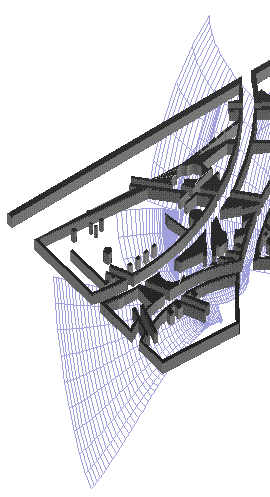 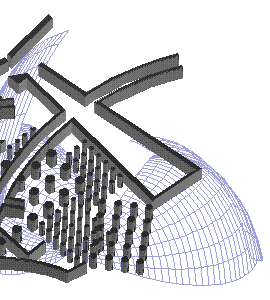
Not the inspiration, rather, it came to mind after the fact.
|